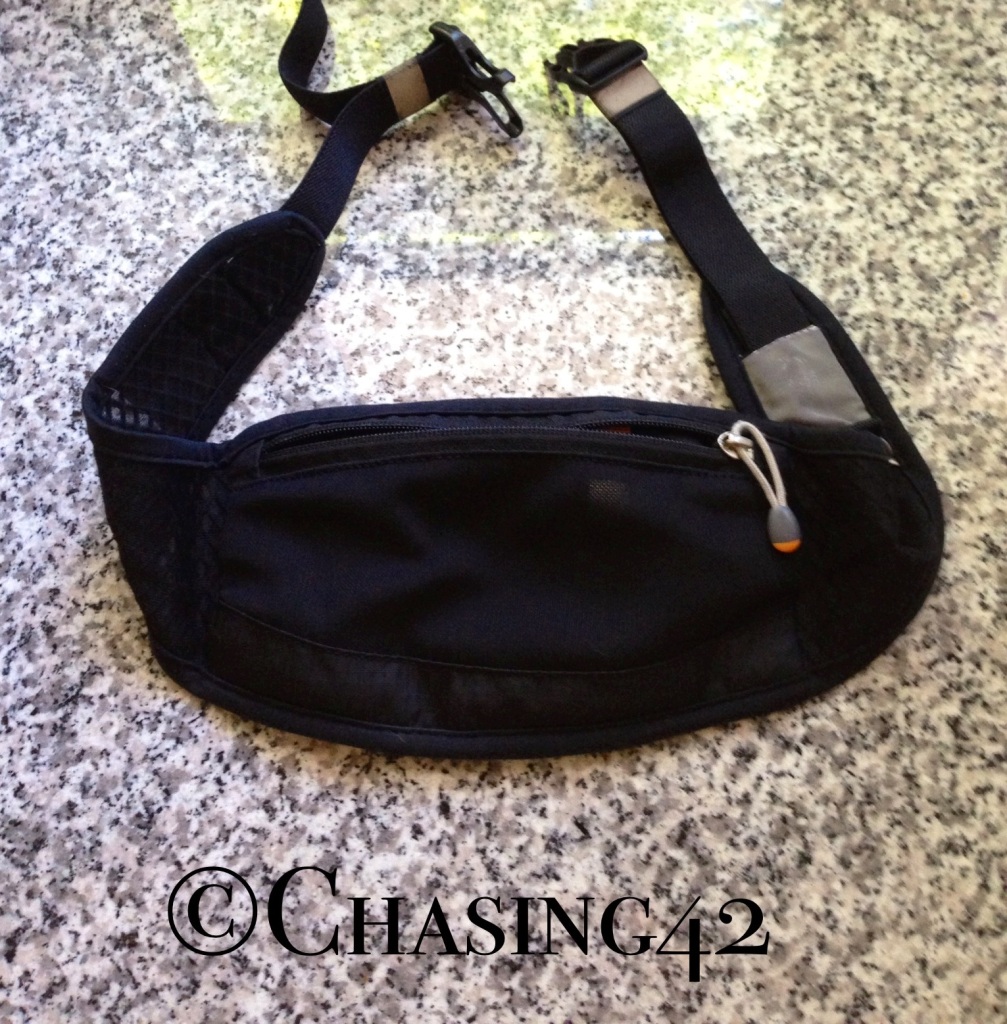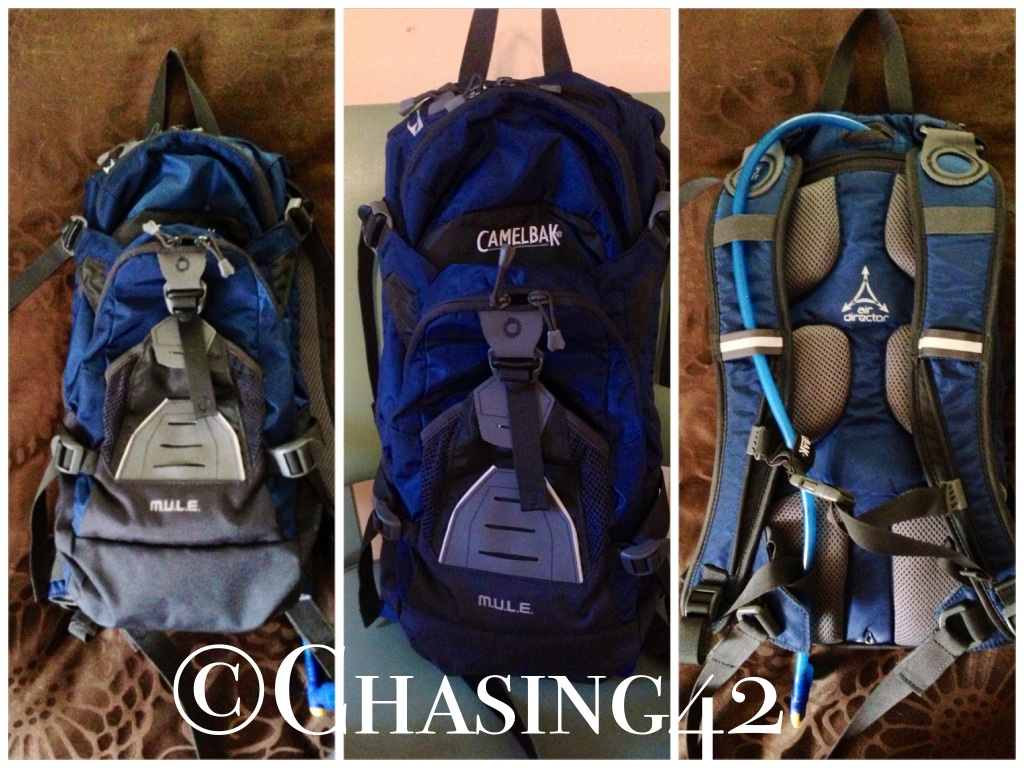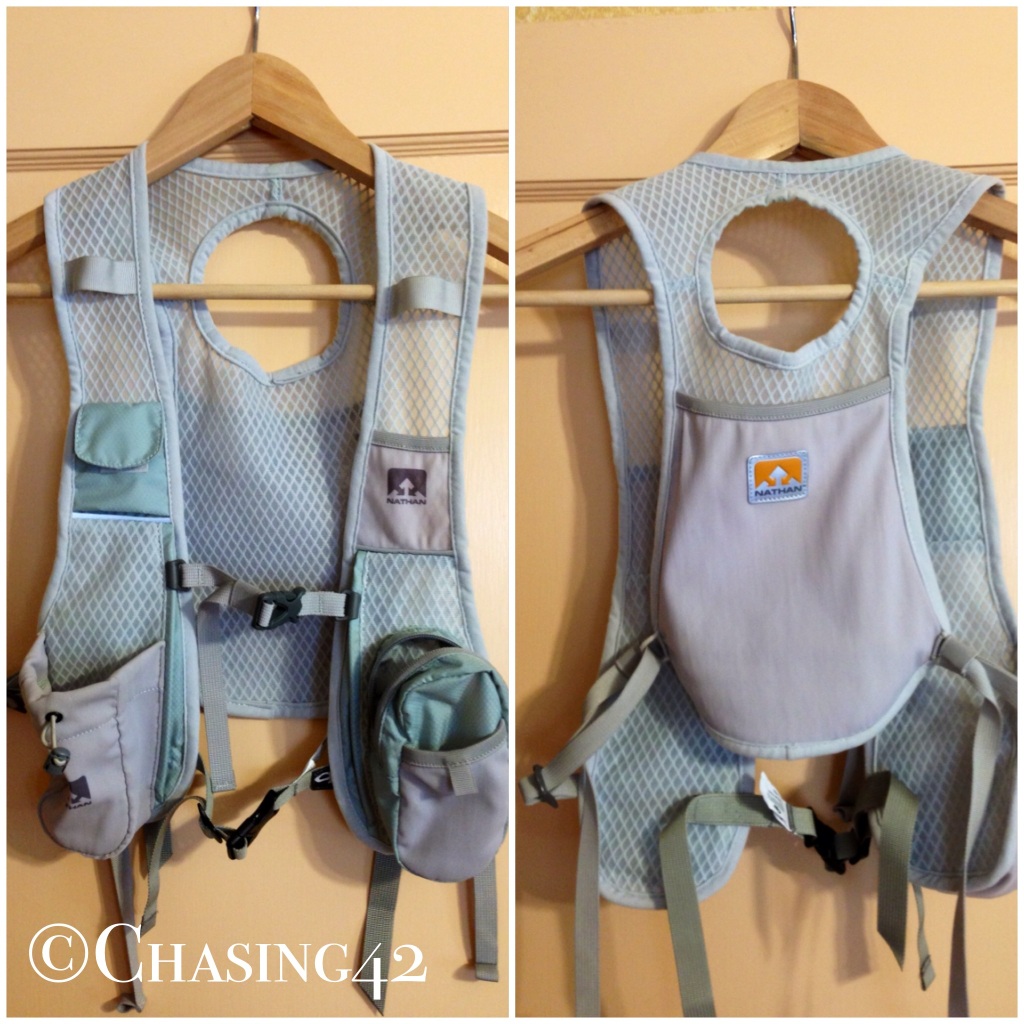Ever since I began running longer and longer distances, I’ve been on the lookout for the most effective means of carrying nutrition, fluids, and other running/race essentials. I’ve utilized a trust Nathan waist pack for quite a while, and have been impressed with it for the most part. I am typically able to carry 3-4 packs of Honey Stinger energy chews, along with a key, my phone (when I bring it), and other miscellaneous essentials. I combine that with one or two handheld water bottles, and I’m good to go. This combination has gotten me through every race I’ve run up to this point, ranging from half marathons to a 50-miler. However, as I’ve been exploring longer and longer distances, and have begun planning for my 24-hour race, it’s occurred to me that there are probably better options out there. At the very least, there are options. Fit, comfort, and accessibility are all in the eye of the runner so you need to do what works best for you. Now that I’ve given you my PSA, I’ll move on.

I began looking into race vests more and more as I read more reviews, saw more ultrarunners wearing them, and thought about the benefits and drawbacks to carrying my nutrition and water on my back. I’ve had some soreness in my lower back from the waist pack before, and although it hasn’t been excessive, it’s been enough for me to consider other options. I liked the idea of having my hands free, although there’s definitely an advantage to having water bottles in your hands when you are going over rocky, root-filled trails (think falling!). In all reality, I’d probably put off giving this idea more consideration due to a bad experience with a pack that really wasn’t designed for racing.
Several years ago, I ran the University of Okoboji Half Marathon for a second or third time. In previous years, the heat in July had been ridiculous and the route left us readily exposed. Thus, I thought running with a hydration pack would help ease my pain. I had purchased the Camelbak Mule recently, and figured I’d give it a go for the race. At this point, I was still relatively new to running, and I hadn’t given the purchase nearly the thought I’m now giving to finding the right pack. I knew the Camelbak brand, it had a decent sized bladder, and plenty of storage. On top of that, I found a great price on The Clymb, so I pulled the trigger. The half-marathon was my first time running in this pack (mistake one). I realized after the fact that this pack was much more suited for hiking and mountain-biking (mistake two). In the end, I hated every moment of the run, and felt like I was carrying a sloshing 12-lb baby for 13.1 miles. I was hydrated and hateful. At this point, I naively swore off hydration packs with bladders all together. I couldn’t stand the sloshing and feel, and figured they were all about the same.

Fast forward two years. I’ve run many more miles, more races, and have spent a great deal more time thinking about how best to accommodate the technical details of my running addiction. Earlier this spring, when I committed to my race schedule for the year and knew I would be tackling some longer distances, I started looking more intently at race vests again. I had seen plenty of trail runners using them, and read enough reviews to know that there were indeed some quality packs out there that were made for running distances both short and long. I like the idea of having the ability to carry everything I need with me for longer runs, and being able to tackle solo and un-supported runs without having to worry about drop bags or figuring out what I can stuff into a waist pouch and my water bottles. Several months ago, I was still apprehensive about a pack with a bladder, and began looking at other options for carrying water. I found several options I hadn’t seen before, including the Ultimate Direction signature series vests, the Salomon Advanced Skin S-Lab hydration packs, and the Mountain Hardware Fluid Race Vest. At the same time, I stumbled across the Nathan HPL #028 Race Vest. It was a more minimalist design, and wouldn’t work for extremely long or unsupported runs, but it had a water bottle holder up front, and storage for nutrition essentials. As is the case with many items in my arsenal, the deep discount on The Clymb sucked me in and I pulled the trigger.
Having never worn a race vest before, I wasn’t sure what to expect, but I was excited to give it a try. The first time I put it on, it seemed to fit really well, and I loved the water bottle holder, combined with several pockets to store nutrition, s-caps, and even a camera or cell phone if you like. Everything was readily accessible up front. An adjustable sternum strap allows for a more custom fit, combined with triangular side straps to really tuck the vest to you snugly. A large mesh pocket on the back is perfect for a second layer, arm warmer, an emergency kit, extra nutrition, or even a second water bottle. Unfortunately, however, it isn’t water proof, so be advised. I strapped it on and loaded it up for my first run with plenty of excitement. I headed out the door, and that’s when it began. The bouncing and sloshing was extremely noticeable.
I continued on my run, after stopping to adjust the side straps and sternum straps in hopes that it would alleviate the bouncing. Unfortunately, nothing I did to adjust the vest prevented it from bouncing on my chest. I’ll clearly never know what it feels like to have breasts, but I have to imagine that the bounce of this vest was similar to a woman heading out on a run without a sports bra (side note- I have a new-found respect for the quality of sports bras!). I headed home, frustrated, but committed to not letting my investment go to waste. After some consideration and a bit more research, I decided to try to add a second sternum strap to the vest to help it fit more snuggly against my chest. I picked up a spare strap at a local outdoor store, and the epicurean assisted me in sewing it onto the vest.

The next morning, I once again eagerly strapped on the vest and headed out for an even longer run. I was convinced that this would do the trick, and rather impressed with my own creativity! Unfortunately, I only made it around the block before I realized that the bounce was still there. Sadly, I dropped the vest off at home, emptied the contents into my Nathan waist pouch, and snagged a second water bottle in hand before heading out for my run. I had plenty of time to consider my next step over the course of a 30-mile run. I’m now convinced, after reading reviews of the Nathan vest, as well as the aforementioned packs, that the vest just doesn’t fit me. I should have purchased a smaller size. I’m honestly not sure what else it could be, considering all of the positive reviews from runners very similar to myself. I may try making some other adjustments in the hope that my investment will not be a complete waste. The vest would still be a wonderful option for shorter runs and races with regular aid stations, so I’m not giving up. However, I’m also moving on and moving forward, so stay tuned for an exciting addition to my running arsenal!
Leave a comment